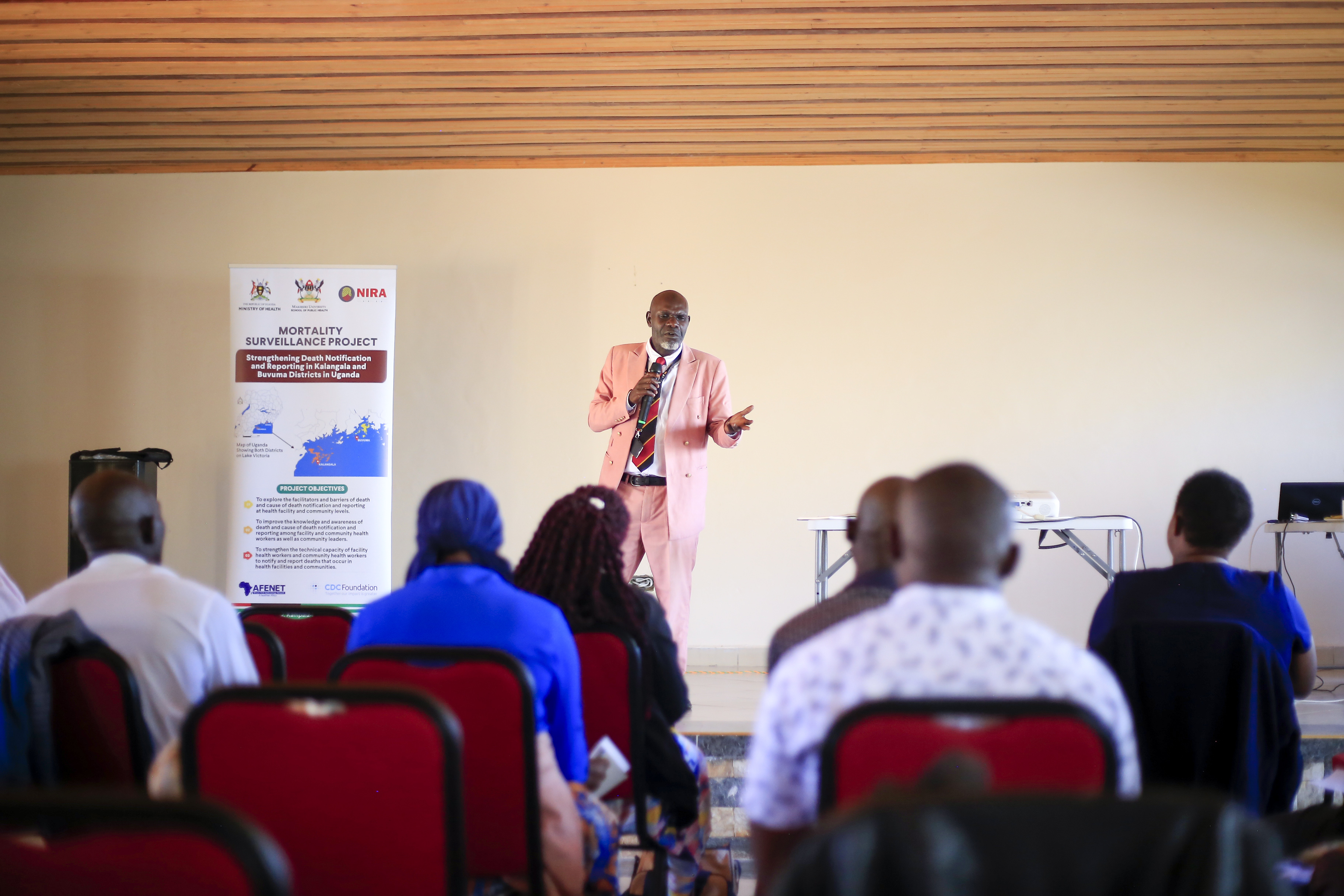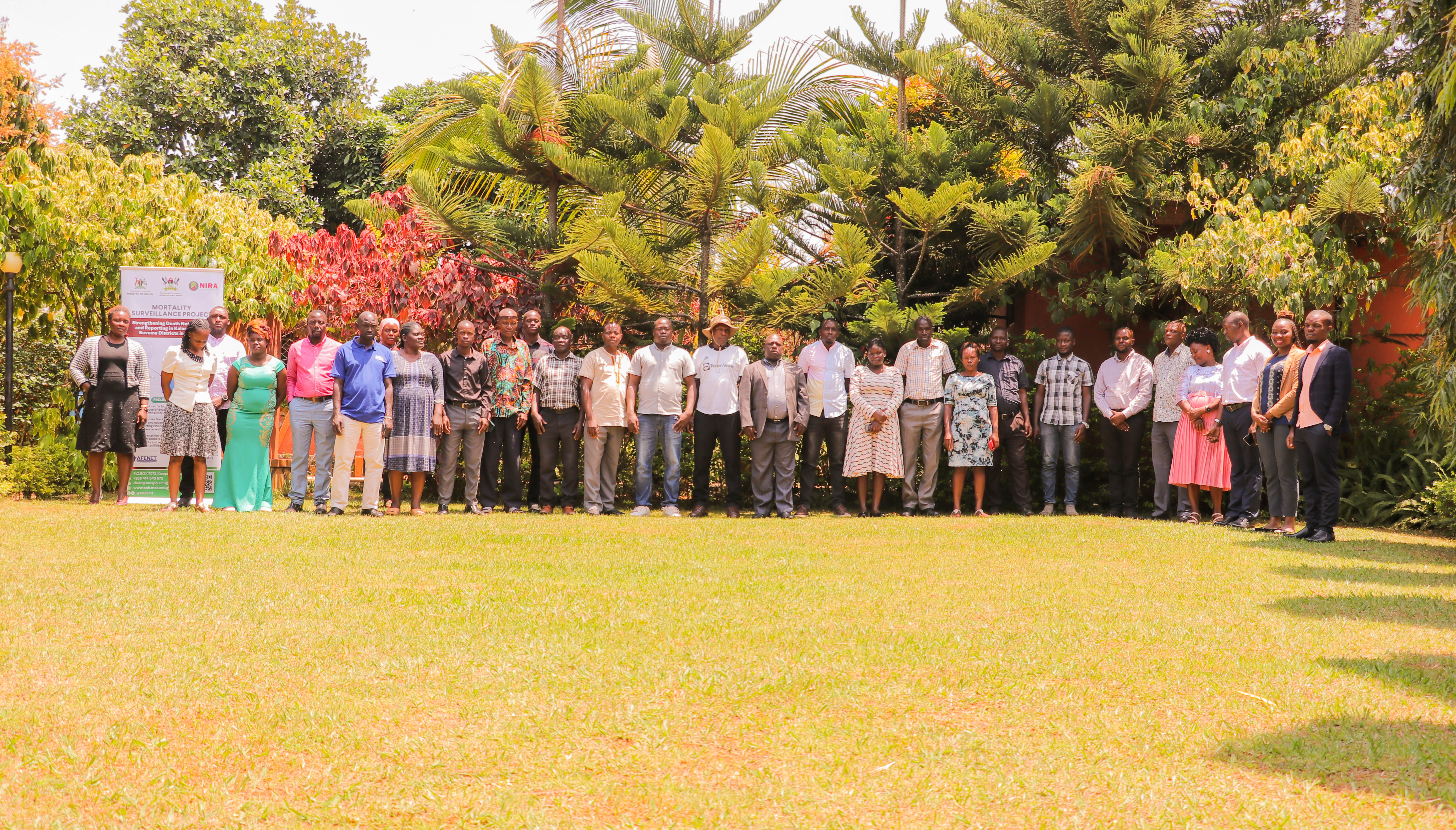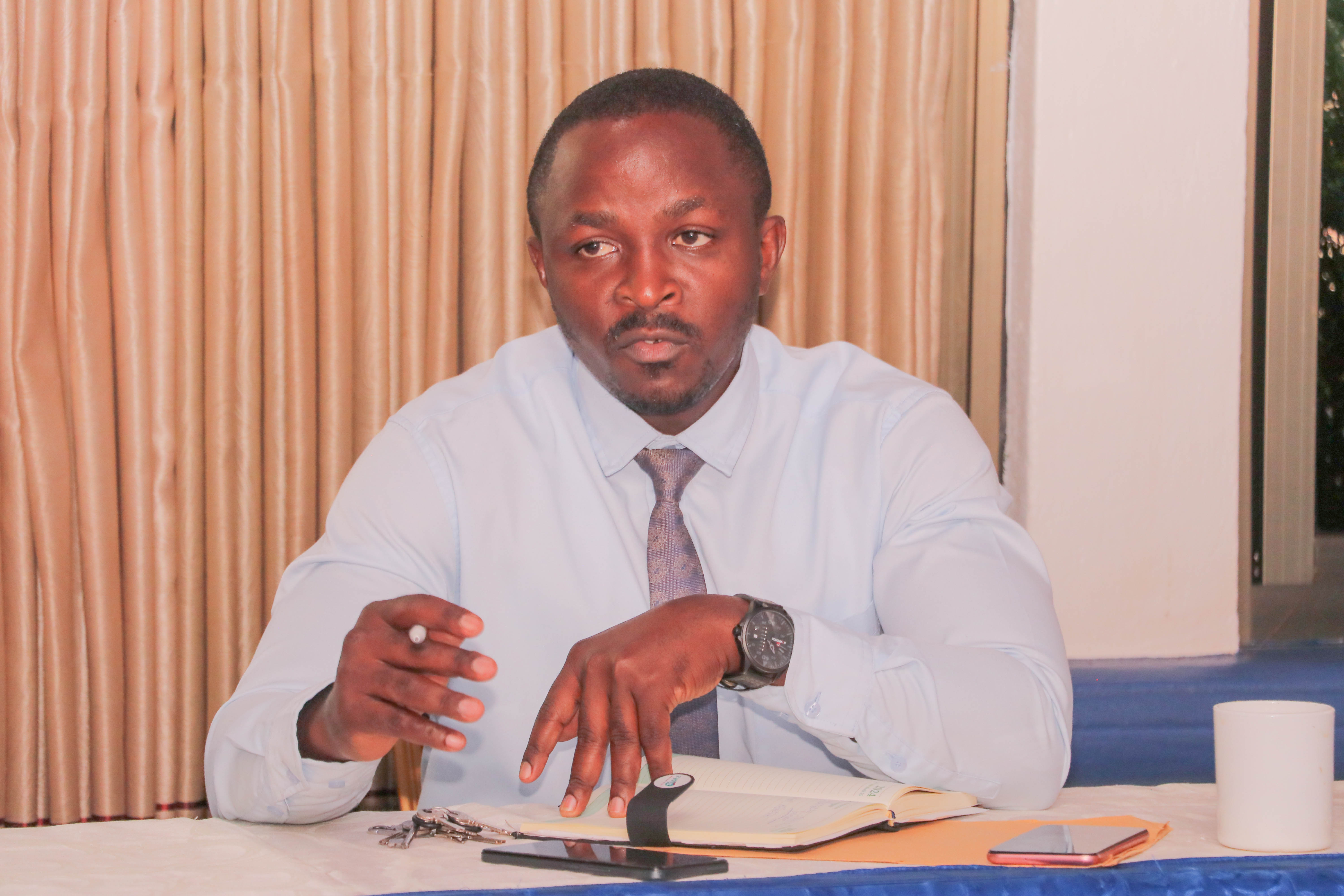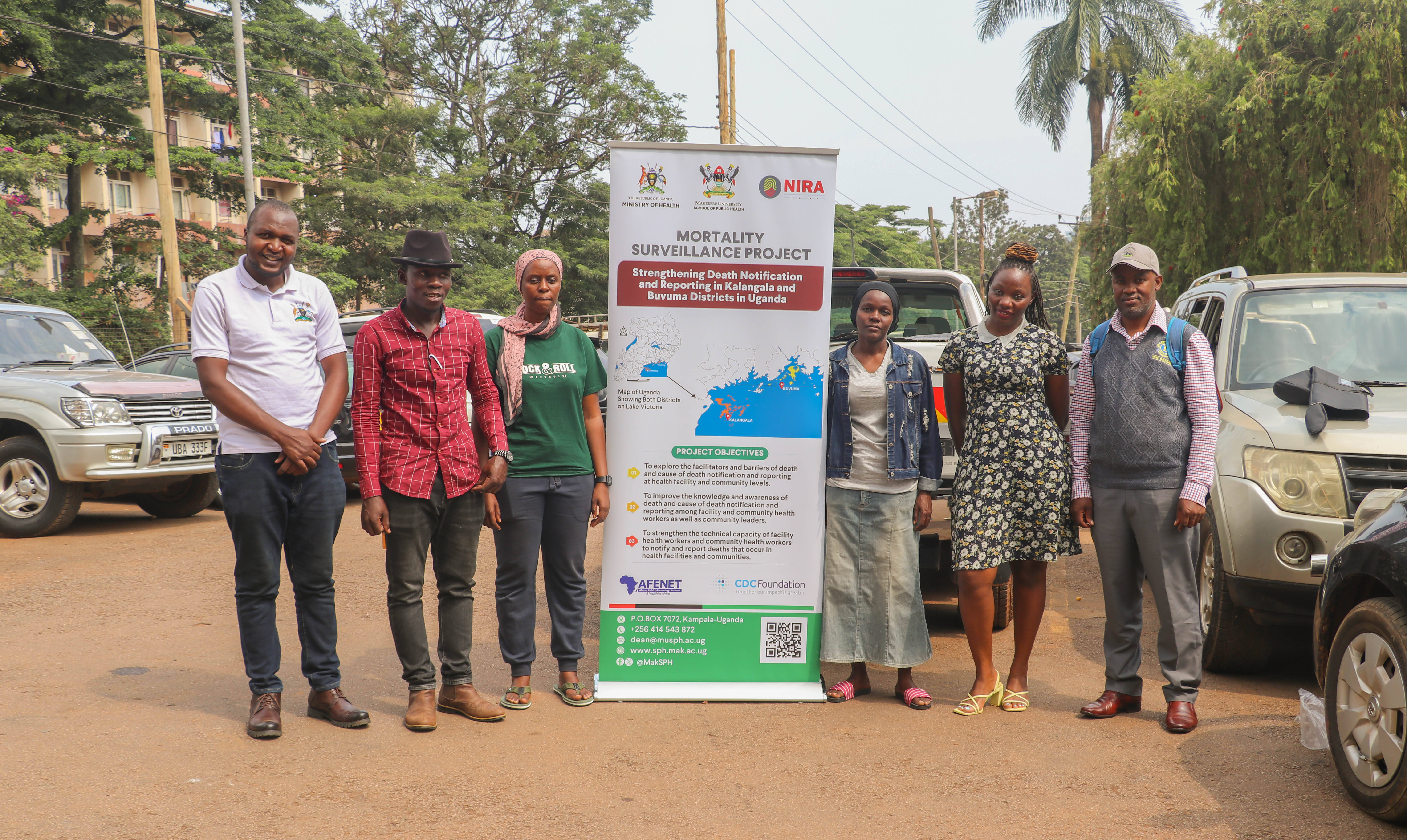
By Okeya John
Makerere University School of Public Health (MakSPH), through its Mortality Surveillance Project, is stepping up capacity-building efforts for local leaders and health workers in Kalangala and Buvuma districts in Central Uganda, aimed at improving the collection, reporting, registration, and use of mortality data for improved health intervention.
Through the initiative, led by Mr. Steven Kabwama - the Principal Investigator for the project, the School recently completed capacity-building training in the two island districts, to strengthen death notification and build surveillance systems by equipping local authorities and the health workforce with the skills to report and document deaths and their causes.
The Strengthening Death Notification and Reporting in Kalangala and Buvuma Districts in Uganda, dubbed Mortality Surveillance Project, is a MakSPH initiative supported by the African Field Epidemiology Network (AFENET), the CDC Foundation and implemented together with the Ministry of Health (MoH), the National Identification and Registration Authority (NIRA), and the District Local Governments in Kalangala and Buvuma islands.
Mortality surveillance, a scientific concept, means tracking deaths and their causes within a population, a tool used by public health officials to monitor trends, identify risks, and design interventions using accurate, timely data. This information is gathered from hospitals, clinics, health workers, and community leaders, with the training of the officials involved in the process key for precise data collection and improving responses to public health challenges.

Dr. Francis Kisakye, a Health In-Charge at Kalangala Health Centre IV and participant in the capacity development training by MakSPH in the district, argues that the focus on mortality surveillance was timely for health practitioners and local leaders, as it served as a crucial reminder about their important responsibility in tracking, reporting, and registering death.
“As a health professional, you have to notify death and certify the cause. But in most cases, deaths go unnotified, unaudited, and uncaptured in the system, so, it is very important that this training has come on board, and we are glad to know that there are people out there willing to support us and see to it that we are up-to-date with mortality surveillance with our data, especially how we capture and present this data.” Dr. Kisakya expressed warmly.
In Uganda, the 2015 Registration of Persons Act mandates the National Identification and Registration Authority (NIRA) to register deaths, something that is free of charge but compulsory for the population, as the law provides that ‘every death shall be registered immediately or not more than three months after it has occurred’.
The death registration process in Uganda today involves documenting the death of a loved one by a next of kin or relative present at the time of death, in a three-step process that starts with death notification – which is a formal record done at a health facility or district local administrative authority, followed by the presentation of this record to NIRA for registration, and final application for a death certificate, which is optional but at a cost of UGX 5000.
The preliminary study done under the MakSPH Mortality Surveillance Project, by a team, led by Mr. Steven Kabwama, together with his colleagues Dr. Rawlance Ndejjo, Mr. Douglas Bulafu, and Prof. Rhoda Wanyenze, indicates that death notification and registration in Uganda remains a challenge and considerably low, reported at about 24 per cent by the Uganda Bureau of Statistics (UBOS) and one per cent by NIRA, although the lack of it is dire: notionally, it impacts health policy planning, response, resource allocation, and decision-making.
The situation in Kalangala and Buvuma in particular remains complex, as the island communities face high mortality from drowning, accidents, communicable and non-communicable diseases, as well as maternal and neonatal deaths, with their unique geographical location providing a significant challenge to effective mortality surveillance.
“Mortality surveillance in Kalangala is tricky because of our geographical location and how sparsely we are distributed and isolated from one another.” Dr. Kisakye confirms, asserting that: “That means deaths occur and we don’t get to know. They occur where there are no health facilities and they will not be notified, and that is still a big challenge for us. We need to empower the local leaders in these islands, such that they can help us do the notification of these deaths which might occur outside the health facilities.”

As a district, Kalangala is made up of over 80 islands scattered across Lake Victoria, of which 64 are habitable with a population of over 67,000, while Buvuma consists of 52 islands, also found in Lake Victoria, with about 10 habitable islands and over 128,000 residents. These two districts are affected by rampant deaths arising from drowning, accidents, and diseases, and most of these cases are unreported, due to poor access and transportation challenges.
The MakSPH mortality surveillance training in Kalangala and Buvuma targeted health workers, village health teams, Subcounty Chiefs, Health Assistants, and local leaders at the district and sub-county levels. In Kalangala, the training covered Kalangala Town Council, Bujumba, Mugoye, Bufumira, Kyamuswa, Mazinga, and Bubeke sub-counties. In Buvuma, it included Bugaya, Busamuzi, Bweema, Nairambi, Buwooya, Lwajje, Lubya and Lyabaana sub-county plus Buvuma Town Council.
The Project Lead, Mr. Kabwama, notes in a presentation that the target is to understand the facilitators and barriers of death and cause of death notification and reporting at health facility and community levels, improve the knowledge and awareness of death and cause of death notification and reporting among facility and community health workers as well as community leaders, and strengthen the technical capacity of facility health workers and community health workers to notify and report deaths that occur in health facilities and communities.
The mortality surveillance training, completed mid-month in September 2024, gave health teams and local leaders in Kalangala and Buvuma the skills to report and track causes of death, for targeted interventions, and better healthcare planning. Focused on imparting technical skills designed to be cascaded for sustainability, the training of trainers programme bridges the gap in mortality surveillance in the remote island areas in Uganda, for timely and accurate death notification and registration, which is crucial for informed decision-making.


